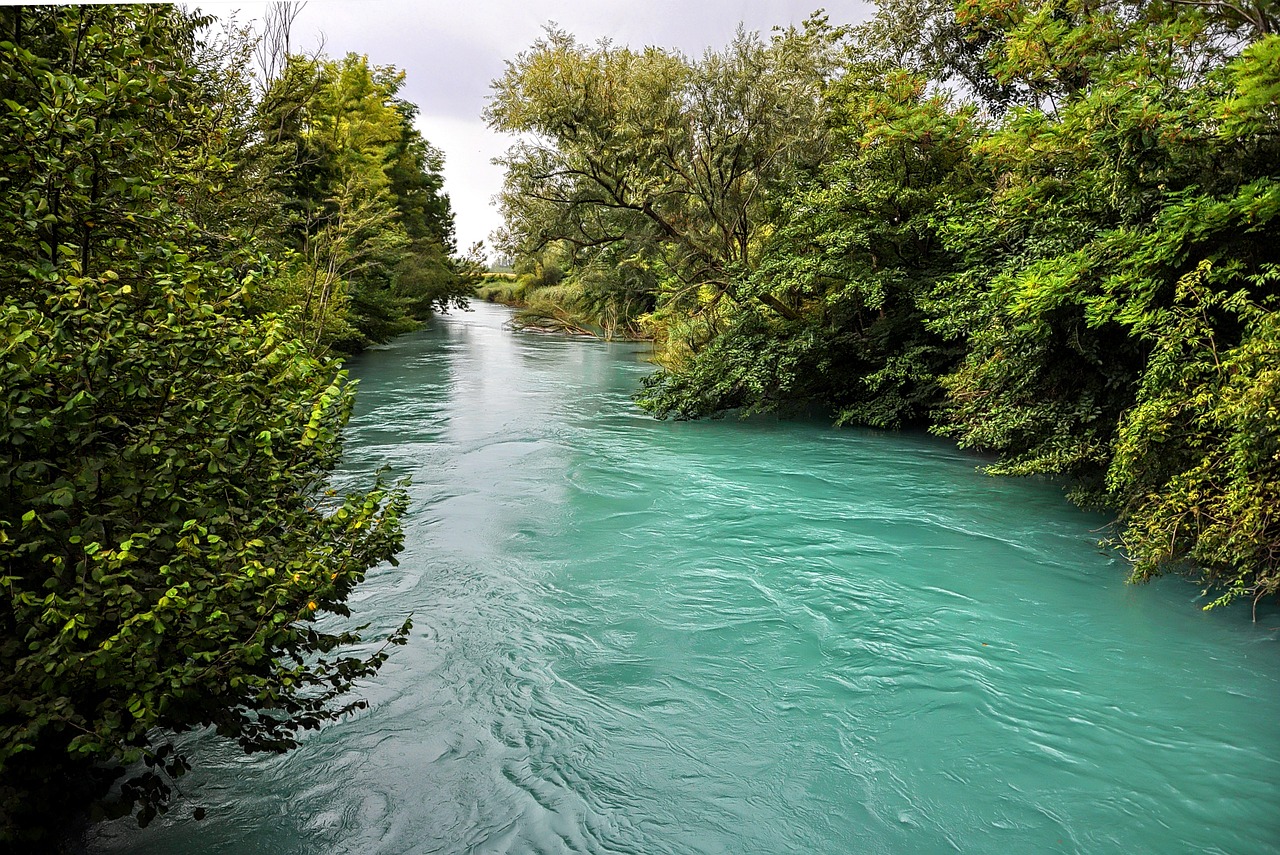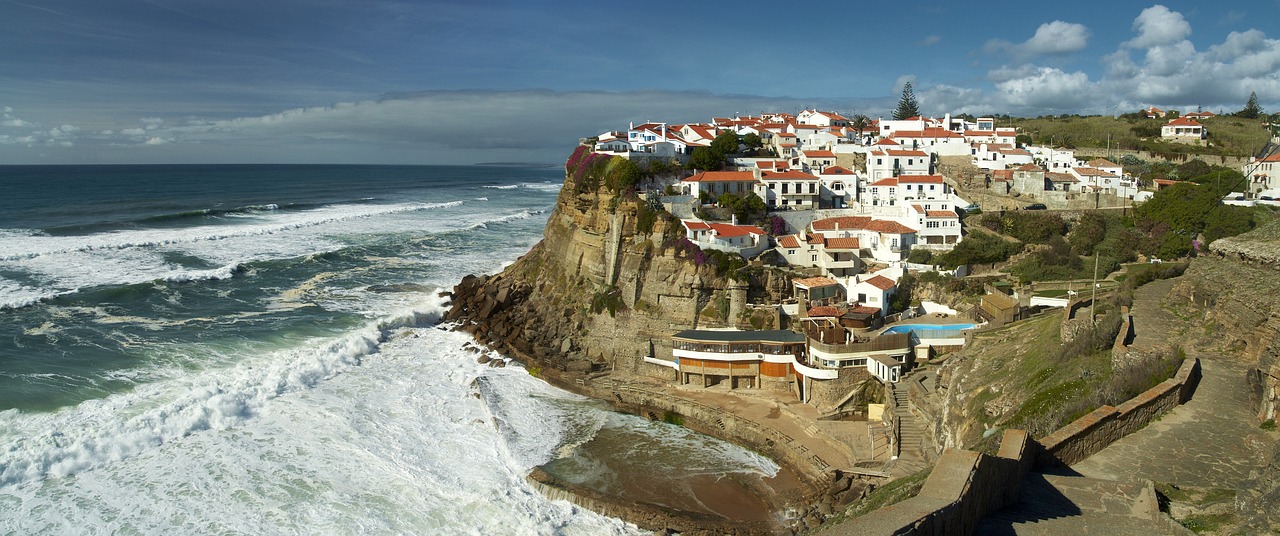Table of Contents
- Atlantic coastal cities, with their stunning waterfront views and vibrant communities, have long been magnets for human settlement and economic activity. However, they also face a significant and growing threat
- Climate Change Impact
- Increased Flooding
- Economic Consequences
- Adaptive Infrastructure
- Urban Planning
- Green Infrastructure
- Public Awareness
- Community Engagement
- Sharing Knowledge
- Advocating for Global Action
Atlantic coastal cities, with their stunning waterfront views and vibrant communities, have long been magnets for human settlement and economic activity. However, they also face a significant and growing threat
rising sea levels driven by climate change. In this article, we will explore the challenges posed by rising seas to these cities and the innovative strategies they are adopting to build climate resilience and secure their futures.
As our planet grapples with the profound impacts of climate change, one of the most pressing challenges faced by coastal cities around the world is the inexorable rise in sea levels. This phenomenon, driven by the warming of our planet and the melting of polar ice, poses a formidable threat to these urban centers. In this article, we embark on a journey to understand the multifaceted challenges presented by rising seas and the creative, innovative strategies that coastal cities are embracing to fortify their resilience and ensure a sustainable future.
1. The Peril of Rising Seas: Rising sea levels are not merely a distant threat; they are an urgent and palpable reality. Coastal cities, which are often bustling hubs of commerce and culture, are at the forefront of this crisis. They face the increased risk of flooding, storm surges and erosion, all of which threaten lives, property and critical infrastructure.
2. The Anatomy of Challenges: To comprehend the complexity of the challenges, we delve into the various facets of the issue. We explore the science behind sea-level rise, the vulnerabilities of coastal cities and the social and economic implications of inundation. Understanding the scope of the problem is the first step toward effective mitigation and adaptation.
3. Innovations in Resilience: Despite these daunting challenges, coastal cities are not passive victims of circumstance. They are dynamic centers of innovation and adaptation. We shine a light on the innovative strategies and technologies that cities are employing to confront sea-level rise head-on. From advanced flood protection systems and resilient urban planning to green infrastructure and sustainable development practices, these initiatives are a testament to human ingenuity and determination.
4. International Cooperation: Rising seas are a global challenge that transcends borders. Coastal cities are forging partnerships and alliances on an international scale. They are sharing knowledge, best practices and solutions to collectively address the shared threat of climate change. These collaborative efforts underscore the interconnectedness of our planet and the urgency of climate action.
5. The Imperative of Sustainable Growth: Ultimately, our exploration leads us to a fundamental question: Can we build a sustainable future while confronting the challenges of rising seas? The answer lies in the intersection of science, policy, innovation and community engagement. Coastal cities are pioneering models of sustainable growth that prioritize resilience, equity and environmental stewardship.
In a world where the effects of climate change are increasingly evident, the plight of coastal cities serves as a poignant reminder of the urgent need for global action. Rising seas may be an inexorable force, but they are met with an equally unstoppable resolve among communities, governments and innovators to build a more resilient and sustainable future. This article takes us on a journey through the challenges and triumphs of coastal cities as they confront the rising tides, offering hope and inspiration in the face of adversity.
Don’t stop here; you can continue your exploration by following this link for more details: Migration and Its Impact on Cities

Climate Change Impact
Atlantic coastal cities are on the frontlines of climate change. As global temperatures rise, the polar ice caps are melting and thermal expansion is causing seawater to encroach upon their shores. This phenomenon, known as sea-level rise, threatens to inundate coastal areas and cause widespread damage.
Atlantic coastal cities find themselves at the forefront of the battle against the impacts of climate change. As global temperatures continue to rise, the consequences are especially pronounced along the Atlantic coastline. Several interconnected factors contribute to the vulnerability of these cities:
Melting Polar Ice Caps: The Arctic and Antarctic regions, where massive ice sheets reside, are experiencing accelerated melting due to rising temperatures. As these ice caps diminish, they contribute freshwater to the oceans, causing sea levels to rise.
Thermal Expansion: Rising temperatures also lead to thermal expansion of seawater. As water warms, it expands, taking up more space in the ocean basins. This expansion is a significant driver of rising sea levels.
Coastal Erosion: Rising sea levels exacerbate coastal erosion. The encroachment of seawater inland erodes coastlines, threatening beaches, infrastructure and valuable ecosystems. Coastal cities must invest in strategies to protect their shorelines.
Increased Flooding: Higher sea levels make coastal cities more susceptible to flooding, especially during storms and high tides. This flooding can disrupt communities, damage property and pose risks to public safety.
Saline Intrusion: Rising seas can lead to the intrusion of saltwater into freshwater aquifers, compromising drinking water supplies and agricultural lands. This has profound implications for both urban and rural communities.
Economic Impact: The economic consequences of sea-level rise are significant. Coastal cities often house vital industries and ports and the damage caused by flooding and erosion can lead to substantial financial losses.
Climate Migration: In response to sea-level rise and its associated impacts, some coastal residents may be forced to migrate inland. This demographic shift can strain resources in receiving areas and lead to social and economic challenges.
Mitigation and Adaptation: To address these challenges, coastal cities are implementing mitigation and adaptation strategies. These include building seawalls and levees, elevating structures, implementing zoning regulations and investing in sustainable urban planning.
Atlantic coastal cities are on the frontline of climate change, grappling with the immediate and long-term consequences of sea-level rise. These cities serve as testing grounds for innovative solutions that can mitigate the impact of rising seas while preserving the unique cultural and economic contributions of coastal communities. The global community must support these efforts to ensure the resilience and sustainability of these vital urban centers.
To expand your knowledge on this subject, make sure to read on at this location: Climate Change: Global Sea Level | NOAA Climate.gov

Increased Flooding
Higher sea levels lead to more frequent and severe coastal flooding during storms, posing a direct threat to the safety and livelihoods of coastal residents.
Higher sea levels, a consequence of climate change, escalate the vulnerability of coastal communities to coastal flooding in various ways, presenting multifaceted challenges that encompass not only immediate safety concerns but also broader socioeconomic impacts:
Increased Coastal Erosion: Rising sea levels intensify the erosive forces of coastal storms and tides, gradually eroding shorelines. This leads to the loss of valuable land, threatening not only property but also the infrastructure that supports livelihoods and communities.
Saline Intrusion: Higher sea levels can push seawater further inland, contaminating freshwater sources in coastal areas. This intrusion jeopardizes agriculture, drinking water supplies and the livelihoods of those who depend on these resources.
Economic Disruption: Coastal flooding disrupts economic activities, such as fishing, tourism and agriculture, which are often the lifeblood of coastal communities. Damaged infrastructure, loss of property and the need for costly repairs can lead to economic downturns and job losses.
Health and Safety Risks: Frequent coastal flooding poses significant health and safety risks to residents. Contaminated floodwaters can carry diseases and the stress of displacement or property damage can have long-term mental health effects.
Insurance Costs: Rising flood risk has implications for insurance costs and availability. In many cases, homeowners and businesses in flood-prone areas face higher premiums or may struggle to obtain coverage, adding to their financial burdens.
Community Displacement: In some extreme cases, chronic coastal flooding may force communities to consider relocation. The prospect of abandoning ancestral homes and communities is emotionally and culturally distressing.
Infrastructure Vulnerability: Critical infrastructure such as roads, bridges, power plants and sewage systems are increasingly at risk. Maintaining these systems in the face of more frequent and severe flooding events is a significant logistical and financial challenge.
Long-Term Planning: To adapt to rising seas and mitigate these impacts, coastal communities must engage in long-term planning and investment. This involves fortifying infrastructure, revising building codes and adopting sustainable land-use practices.
International Cooperation: Rising sea levels are a global issue and coastal cities around the world are facing similar challenges. International cooperation and knowledge sharing are vital for developing effective solutions and strategies to protect coastal communities and their livelihoods.
In conclusion, the consequences of higher sea levels extend far beyond immediate safety concerns, impacting the fabric of coastal communities and their long-term resilience. Addressing these multifaceted challenges requires a holistic approach that combines physical adaptations, sustainable practices, community engagement and international collaboration to safeguard the safety, livelihoods and cultures of coastal residents.
Don’t stop here; you can continue your exploration by following this link for more details: Chapter 4: Sea Level Rise and Implications for Low-Lying Islands …

Economic Consequences
The economic impact of sea-level rise is substantial. Coastal cities are hubs of commerce and industry and the infrastructure and real estate at risk from rising seas represent trillions of dollars in assets.
The economic ramifications of sea-level rise are far-reaching and substantial, with potentially dire consequences for coastal cities and the global economy as a whole. Here, we delve deeper into the multifaceted aspects of this pressing issue:
1. Coastal Cities: Economic Hubs at Risk: Coastal cities are economic powerhouses, serving as vital centers of commerce, industry and innovation. They are home to major ports, financial districts and cultural hubs that drive regional and global economies. Sea-level rise poses a direct threat to these cities, endangering not only their populations but also the economic activities that thrive along their shores. From New York and Miami in the United States to Shanghai and Mumbai internationally, these cities are at the frontline of climate-induced economic risks.
2. Infrastructure Vulnerabilities: The infrastructure in coastal regions, including roads, bridges, airports and seaports, represents a massive investment. Rising sea levels and increased flooding can compromise the functionality and longevity of these critical assets. Repairing and reinforcing infrastructure against the impacts of sea-level rise require significant financial resources, putting additional strain on public budgets and potentially leading to increased taxes or public debt.
3. Real Estate and Property Values: Sea-level rise poses a direct threat to real estate markets in coastal areas. Properties at risk of flooding may see their values decline, which can have cascading effects on homeowners, businesses and local tax revenues. Moreover, real estate developers and investors face increased uncertainties, potentially leading to reduced investment in vulnerable coastal properties.
4. Insurance and Liability: The insurance industry is grappling with the growing risks associated with climate change, including sea-level rise. As the frequency and severity of coastal flooding events increase, insurance companies may face higher payouts, which can lead to rising premiums for property owners. Additionally, there is a growing concern about liability for developers and governments who fail to adequately plan for and mitigate the impacts of rising seas.
5. Displacement and Migration: As coastal areas become less habitable due to sea-level rise and increased flooding, populations may be forced to relocate. This displacement can disrupt local economies, strain social safety nets and lead to a loss of skilled labor in affected regions. The costs associated with managed retreat and the resettlement of communities are substantial and can place a burden on government resources.
6. Global Supply Chains: Coastal regions are often home to major ports and shipping hubs critical to global trade. Sea-level rise can disrupt supply chains, leading to delays, increased transportation costs and potential shortages of goods. The economic repercussions of such disruptions can be felt far beyond the coastal areas directly affected.
7. Innovation and Adaptation Opportunities: While sea-level rise presents significant challenges, it also offers opportunities for innovation and economic growth. Investing in sustainable infrastructure, resilient urban planning and green technologies can not only mitigate the impacts of rising seas but also foster economic development and job creation in the emerging green economy.
In conclusion, the economic impact of sea-level rise is a complex and multifaceted issue that touches on every aspect of coastal life and commerce. The stakes are high and addressing these challenges requires proactive planning, investment and international cooperation. As the world grapples with the effects of climate change, finding sustainable solutions to protect coastal economies and communities is not only a matter of necessity but also an opportunity to shape a more resilient and prosperous future.
For additional details, consider exploring the related content available here Climate Impacts on Coastal Areas | Climate Change Impacts | US EPA

Adaptive Infrastructure
Atlantic coastal cities are investing in adaptive infrastructure to protect against rising seas. This includes the construction of seawalls, levees and flood barriers designed to withstand higher water levels and reduce the risk of flooding.
Atlantic coastal cities are at the forefront of climate change adaptation efforts, recognizing the urgent need to protect their communities and critical infrastructure from the increasingly evident impacts of rising seas. In response to the growing threat of sea-level rise, these cities are proactively investing in adaptive infrastructure projects that aim not only to mitigate the risks of flooding but also to enhance overall resilience.
Seawalls, levees and flood barriers have become iconic features of these coastal landscapes. These protective structures serve as formidable defenses against the encroaching waters. Seawalls, constructed along the waterfront, are designed to absorb the energy of incoming waves and prevent erosion of coastal land. Levees, on the other hand, are often built further inland and act as raised embankments, creating a barrier between the city and the sea. Flood barriers, which can be temporary or permanent, are strategically deployed to block surging waters during extreme events.
What makes these adaptive infrastructure projects so vital is their ability to adapt to changing conditions. In anticipation of rising sea levels, engineers and planners are designing these structures with a long-term view, factoring in predicted sea-level rise projections. Materials chosen for construction are often resilient to saltwater corrosion and can withstand the erosive forces of waves and tides. Moreover, innovative engineering solutions, such as movable flood barriers and flexible coastal defenses, allow for adaptive responses to different water levels and weather events.
These infrastructure investments offer multiple benefits beyond flood protection. They bolster the local economy by creating jobs and attracting new investments. The improved urban planning associated with these projects often leads to more livable, waterfront communities with enhanced recreational spaces and green infrastructure. Additionally, the heightened resilience of these cities can reduce the social and economic costs of disaster recovery, ultimately benefiting both residents and businesses.
However, the development of adaptive infrastructure is not without challenges. These projects are typically expensive and require substantial financial resources, often necessitating collaboration between governments, the private sector and international organizations. Balancing the need for protection with environmental concerns is another critical consideration, as these structures can impact coastal ecosystems and habitats.
Moreover, communities must not solely rely on physical barriers for protection. A holistic approach to resilience includes a combination of strategies, such as urban planning, ecosystem restoration, early warning systems and community engagement. Embracing nature-based solutions, such as wetland restoration and mangrove conservation, can complement traditional infrastructure and provide additional benefits, such as habitat preservation and water quality improvement.
In summary, Atlantic coastal cities are taking proactive steps to safeguard their future in the face of rising seas. The construction of adaptive infrastructure, including seawalls, levees and flood barriers, reflects their commitment to protecting their communities, economies and cultural heritage. These investments demonstrate the power of human ingenuity and collaboration in the ongoing battle against the impacts of climate change, serving as models for resilience that can inspire cities worldwide.
Looking for more insights? You’ll find them right here in our extended coverage: Integrating the Grey, Green, and Blue in Cities: Nature-Based …

Urban Planning
Many cities are revising their zoning and land-use regulations to restrict development in flood-prone areas. They are also encouraging the construction of resilient, elevated buildings that can withstand flooding.
Cities Adapting to the Rising Tide: Building a Resilient Future
In the face of increasingly frequent and severe flooding, cities around the world are taking proactive measures to protect their communities and embrace resilience as a cornerstone of urban planning. This transformation involves not only revising zoning and land-use regulations but also fostering a cultural shift toward sustainability and preparedness. By prioritizing the construction of elevated, flood-resistant buildings and innovative infrastructure, cities are setting a precedent for a more resilient and sustainable future.
1. Zoning Revisions for Flood Mitigation:
- Cities are reevaluating and adapting their zoning and land-use regulations to limit development in flood-prone areas. This proactive approach helps reduce exposure to flood risks, preserving lives and property. It also entails stricter regulations on the construction of new buildings and developments in vulnerable zones.
2. Resilience at the Core of Urban Planning:
- Resilience is no longer an afterthought but a central pillar of urban planning. Cities are incorporating climate resilience strategies into their master plans, ensuring that infrastructure and communities can withstand the challenges of a changing climate. This includes designing for more resilient transportation systems, energy grids and water management.
3. Elevated Buildings: Fortresses Against Flooding:
- To combat the threats posed by rising sea levels and severe storms, cities are encouraging the construction of elevated buildings that serve as fortresses against flooding. These structures are designed to endure inundation without significant damage, safeguarding lives and property.
4. Adaptive Infrastructure:
- Beyond elevated buildings, adaptive infrastructure is becoming the norm. Cities are investing in flood barriers, levees and seawalls to protect vulnerable coastal areas. These projects are engineered to adapt to changing conditions and provide robust protection.
5. Embracing Green Solutions:
- In addition to traditional infrastructure, cities are embracing green solutions. Green roofs, permeable pavements and strategically planted vegetation help absorb excess rainwater, reduce runoff and mitigate flooding. These eco-friendly measures enhance both urban resilience and sustainability.
6. Community Engagement and Education:
- Resilience extends beyond bricks and mortar. Cities are engaging communities and educating residents about flood risks and preparedness. Public awareness campaigns, emergency drills and community-based organizations play a vital role in building a culture of resilience.
7. Data-Driven Decision-Making:
- Advances in technology and data analytics enable cities to make informed decisions about flood management. Real-time monitoring of weather patterns, water levels and drainage systems allows for timely responses and improved disaster preparedness.
8. Global Collaboration:
- Climate change knows no borders and cities recognize the importance of global collaboration. They are sharing best practices, research and innovations to collectively address the challenges of climate-induced flooding.
In conclusion, cities are evolving to meet the realities of a changing climate and the increasing threat of flooding. By revising regulations, fostering a culture of resilience and investing in innovative infrastructure, they are laying the foundation for a more sustainable and secure urban future. These measures not only protect against the immediate risks of flooding but also contribute to the long-term well-being and prosperity of communities worldwide.
Should you desire more in-depth information, it’s available for your perusal on this page: Coastal Adaptation to Climate Change and Sea-Level Rise

Green Infrastructure
Some cities are turning to nature-based solutions, such as the restoration of wetlands and the creation of green spaces, to absorb excess water and reduce the impact of flooding.
Embracing Nature’s Resilience: Urban Flooding and Nature-Based Solutions
In the face of escalating urban flooding challenges, some forward-thinking cities are rewriting the playbook for flood management by turning to nature-based solutions. These innovative approaches harness the power of the natural world, including the restoration of wetlands and the creation of green spaces, to absorb excess water and mitigate the devastating impacts of flooding. Such strategies not only fortify cities against the growing threats of climate change but also provide a host of additional benefits, from improved urban livability to enhanced biodiversity.
1. Wetland Restoration: Nature’s Sponges: Wetlands, often referred to as “nature’s sponges,” play a pivotal role in flood mitigation. Cities are increasingly recognizing the value of restoring or expanding wetland areas to absorb excess rainfall and floodwaters. These restored wetlands act as natural reservoirs, temporarily holding and slowly releasing water, reducing the intensity of downstream flooding events.
2. Green Spaces as Flood Buffers: Green spaces, including parks, urban forests and green corridors, are emerging as urban flood buffers. These spaces provide permeable surfaces that absorb rainwater and excess runoff, reducing the volume of water flowing into streets and drainage systems. The incorporation of green infrastructure into urban planning can significantly decrease flood risk.
3. Multiple Benefits Beyond Flooding: Nature-based flood management solutions offer a multitude of benefits beyond flood reduction. Green spaces enhance urban aesthetics, providing tranquil sanctuaries for residents. They also promote physical and mental well-being, serving as venues for recreation, exercise and community gatherings. Moreover, they support urban biodiversity, fostering habitats for native flora and fauna.
4. Resilience in the Face of Climate Change: As climate change intensifies the frequency and severity of extreme weather events, including storms and heavy rainfall, cities are increasingly recognizing the importance of resilience. Nature-based solutions provide a sustainable and adaptable means of coping with these challenges while minimizing the reliance on traditional, often costly, engineering solutions.
5. Community Engagement and Education: The implementation of nature-based flood management strategies often involves community engagement and education. Citizens become stewards of these green spaces, participating in their care and understanding the role they play in flood reduction. This engagement builds a sense of shared responsibility and strengthens the community’s resilience.
6. Policy and Investment: Successful adoption of nature-based flood management strategies requires supportive policies and investments. City governments and urban planners must prioritize the integration of green infrastructure into urban development plans. Investment in research, education and monitoring can help ensure the effectiveness and longevity of these solutions.
In essence, the adoption of nature-based solutions for urban flood management represents a paradigm shift in how we view and interact with our urban environments. By harnessing the resilience of nature, cities not only fortify themselves against the rising tide of urban flooding but also create healthier, more livable and sustainable urban spaces for their residents. These innovative approaches demonstrate the powerful synergy between urban development and ecological preservation, forging a path toward a more resilient and harmonious urban future.
You can also read more about this here: Preparing for Change | FHWA

Public Awareness
Educating residents about the risks of rising sea levels is essential. Many cities are launching public awareness campaigns to inform citizens about the dangers and encourage preparedness.
Educating residents about the imminent risks posed by rising sea levels is not just essential; it’s a critical component of building resilient and adaptive communities in the face of climate change. As the impacts of sea-level rise become more evident, cities and coastal regions are taking proactive steps to raise public awareness through comprehensive campaigns aimed at informing citizens about the dangers they face and inspiring collective preparedness. Here, we delve into the multifaceted aspects of these initiatives and why they are indispensable in the battle against rising seas.
Understanding the Risks: Public awareness campaigns serve as vital tools for conveying the scientific reality of rising sea levels. They provide accessible information about the causes and consequences of sea-level rise, making it clear that it is not an abstract, distant threat but an immediate concern. By fostering a better understanding of the science behind sea-level rise, residents are more likely to comprehend the urgency of the issue and its implications for their lives.
Mitigating Vulnerabilities: These campaigns also highlight the specific vulnerabilities that cities and communities face due to rising sea levels. Whether it’s coastal flooding, erosion or increased storm surges, residents gain insight into the potential impacts on their homes, infrastructure and local economies. This knowledge empowers individuals and communities to take proactive measures to reduce their vulnerability, such as elevating homes, reinforcing infrastructure or revising zoning and building codes.
Encouraging Preparedness: Preparedness is at the heart of any effective response to sea-level rise. Public awareness campaigns inspire residents to take concrete steps to prepare for the challenges ahead. This can include creating emergency plans, assembling disaster kits and participating in community resilience initiatives. By encouraging preparedness, these campaigns ensure that individuals and families are better equipped to respond effectively in times of crisis.
Promoting Sustainable Practices: Rising sea levels are often linked to climate change, making it imperative to address broader sustainability issues. Public awareness campaigns frequently emphasize the importance of reducing greenhouse gas emissions, conserving water resources and adopting eco-friendly practices. These campaigns promote a holistic approach to climate resilience, emphasizing that mitigating sea-level rise is intertwined with broader environmental stewardship.
Fostering Community Engagement: Effective public awareness campaigns also foster community engagement. They encourage residents to get involved in local decision-making processes related to climate adaptation and mitigation. By engaging citizens in dialogues about coastal resilience and involving them in planning efforts, cities and regions can harness local knowledge and creativity to develop effective strategies.
Leveraging Technology and Social Media: In today’s digital age, technology and social media platforms are powerful tools for disseminating information and fostering community engagement. Public awareness campaigns often utilize these mediums to reach a wider audience and promote active participation. Engaging infographics, interactive websites and social media campaigns can make complex climate science more accessible and relatable.
As sea-level rise continues to accelerate, educating residents about its risks and encouraging preparedness becomes increasingly urgent. Public awareness campaigns are instrumental in building a resilient society that can adapt to the challenges of a changing climate. By equipping individuals and communities with the knowledge and tools to confront rising sea levels, these campaigns are key drivers in the global effort to protect coastal regions and secure a sustainable future for generations to come.
Should you desire more in-depth information, it’s available for your perusal on this page: Climate Change: Global Sea Level | NOAA Climate.gov

Community Engagement
Engaging with local communities is crucial for developing effective climate resilience strategies. Cities are working with residents to identify vulnerabilities and tailor solutions to their unique needs.
Engaging with local communities is crucial for developing effective climate resilience strategies. Cities are working with residents to identify vulnerabilities and tailor solutions to their unique needs. This collaborative approach not only strengthens a city’s ability to adapt to climate change but also fosters community empowerment and social cohesion.
Community Knowledge and Expertise: Local residents possess invaluable knowledge about their neighborhoods and are often the first to identify vulnerabilities to climate impacts. By involving communities in the planning process, cities can tap into this expertise. For example, long-term residents may have insights into historical weather patterns or flood-prone areas that official data might miss.
Tailored Solutions: Climate resilience is not a one-size-fits-all solution. Different communities within a city may face varying risks and challenges. Engaging with local residents allows cities to tailor strategies to specific neighborhoods. For instance, a coastal community might need different adaptation measures than an inland area prone to heatwaves or urban flooding.
Community Ownership: When residents are actively involved in the development of climate resilience plans, they have a sense of ownership and investment in the outcomes. This can lead to greater compliance with and support for resilience measures. When people understand the rationale behind these strategies, they are more likely to embrace them.
Social Cohesion: Collaborative climate resilience efforts can foster social cohesion within communities. As residents work together to address shared challenges, they build stronger social networks and a sense of solidarity. These bonds can be critical during extreme weather events or emergencies when communities need to come together to support one another.
Equity and Justice: Climate change disproportionately affects vulnerable populations, including low-income communities and marginalized groups. Engaging with these communities ensures that climate resilience strategies are equitable and just. Cities can address existing disparities and ensure that no one is left behind in their efforts to adapt to a changing climate.
Behavioral Change: Community engagement can also drive behavioral change. Residents who are informed and involved in climate resilience initiatives are more likely to take individual actions to reduce their carbon footprint, conserve resources and prepare for climate impacts. This collective effort can have a significant positive impact on a city’s overall resilience.
Data Collection and Monitoring: Local communities can assist in data collection and monitoring efforts. Citizens can report real-time observations of weather-related events or changes in their environment, providing valuable information for early warning systems and adaptive planning.
Education and Awareness: Engaging with local communities allows cities to educate residents about climate change, its impacts and the importance of resilience. Informed communities are better equipped to respond to emergencies and make informed decisions about their future.
Partnerships: Collaboration with community organizations, non-profits and grassroots initiatives can amplify the impact of climate resilience efforts. These partnerships can leverage local resources, expertise and networks to implement effective strategies.
In conclusion, community engagement is not just a key element of climate resilience planning; it is an essential component for building sustainable, equitable and resilient cities. By involving local residents in the process, cities can harness the collective wisdom, creativity and strength of their communities to confront the challenges posed by a changing climate and ensure a more resilient future for all.
For additional details, consider exploring the related content available here Chapter 4: Sea Level Rise and Implications for Low-Lying Islands …

Sharing Knowledge
Coastal cities are sharing knowledge and best practices with one another to learn from successful climate resilience efforts. International collaborations and partnerships are helping cities pool resources and expertise.
In the face of the escalating climate crisis, coastal cities worldwide have recognized the urgency of fortifying their defenses against rising seas, extreme weather events and other climate-related challenges. These cities are not just isolated entities battling environmental threats; they are active participants in a global network of urban areas facing similar perils.
One notable aspect of this global response is the sharing of knowledge and best practices among coastal cities. Recognizing that effective climate resilience strategies transcend geographical boundaries, cities are coming together to learn from each other’s experiences. They exchange insights on what works and what doesn’t, leveraging a collective wisdom that accelerates progress.
For instance, a coastal city in one region might have developed innovative flood management systems that could benefit a city on the other side of the world grappling with similar issues. By sharing these successes and lessons learned, urban centers can save valuable time and resources that might otherwise be spent reinventing the wheel. This collaborative spirit fosters a sense of unity in the face of a shared threat, transcending political borders and fostering goodwill among diverse communities.
International collaborations and partnerships have become instrumental in this endeavor. Cities are joining hands with organizations like the United Nations, regional climate alliances and non-governmental organizations to access funding, technical expertise and policy support. These collaborations empower cities to pool their resources, collectively address common challenges and negotiate for their interests on the global stage.
Moreover, they enable cities to tap into a broader knowledge base and gain access to cutting-edge research and technology. For example, a city in a developed nation might assist a less affluent coastal city in implementing sustainable infrastructure solutions or climate-resilient housing designs. Such partnerships bridge economic disparities and promote equity in climate resilience efforts.
In essence, coastal cities are rewriting the playbook on urban resilience by embracing the principles of collaboration and shared knowledge. As they work together to build stronger, more adaptable communities, they are also sending a powerful message to the world: the fight against climate change is a collective endeavor that transcends borders and the success of one city benefits us all. This united front offers hope for a more resilient and sustainable future for coastal communities everywhere.
Explore this link for a more extensive examination of the topic: Climate Change: Global Sea Level | NOAA Climate.gov

Advocating for Global Action
Coastal cities are advocating for global climate action, urging governments to reduce greenhouse gas emissions to slow the rate of sea-level rise and mitigate its impacts.
Coastal cities, as frontline witnesses to the escalating consequences of climate change, have emerged as vocal champions of global climate action. They recognize the urgency of the situation and understand that the fate of their communities is deeply entwined with the world’s response to this existential challenge. Expanding on this idea:
Advocacy for Climate Resilience: Coastal cities are not only advocating for immediate climate action but also investing in long-term resilience strategies. They are lobbying for robust policies that target the reduction of greenhouse gas emissions, emphasizing the importance of international agreements like the Paris Agreement to limit global warming. By pushing for these measures, they aim to slow the rate of sea-level rise, giving communities more time to adapt.
Innovative Urban Planning: These cities are pioneering innovative urban planning and infrastructure projects that can serve as models for the rest of the world. They are reimagining their waterfronts with climate resilience in mind, incorporating features like elevated buildings, flood barriers and sustainable transportation systems. Through these efforts, they are leading the way in demonstrating how cities can adapt to rising sea levels while maintaining quality of life.
Community Engagement: Coastal city leaders are actively engaging their communities in climate action efforts. They understand that meaningful change requires the cooperation of residents and local businesses. Public awareness campaigns, education programs and community-driven initiatives are empowering citizens to take individual actions that collectively contribute to emissions reduction and climate resilience.
Economic Imperative: These cities recognize the economic stakes involved in climate action. Coastal areas often serve as economic hubs, home to major industries, ports and tourism. Rising sea levels and extreme weather events pose significant economic risks. By advocating for climate action, they aim to protect their economic stability and the livelihoods of their residents.
Global Networks and Partnerships: Coastal cities are forging international partnerships and networks to share knowledge, best practices and resources. Initiatives like the Global Covenant of Mayors for Climate & Energy allow them to collaborate on climate initiatives, leveraging their collective strength to influence national and international policies.
Scientific Collaboration: Many coastal cities are collaborating with scientific institutions to gain a better understanding of local climate impacts and to inform their adaptation strategies. They are actively involved in studies related to sea-level rise, coastal erosion and the health of marine ecosystems, using data-driven insights to inform decision-making.
Resettlement and Relocation: In some cases, coastal cities are faced with the difficult decision of planning for managed retreat or relocation of vulnerable communities. They are working on equitable and compassionate solutions to ensure that those affected by climate change-induced displacement are supported throughout the process.
Leadership and Inspiration: Through their advocacy, coastal cities are setting an example for other urban centers around the world. They are demonstrating that cities can be leaders in the fight against climate change, even in the face of daunting challenges. Their actions inspire other regions to take bold steps to address climate change.
In sum, coastal cities are at the forefront of the battle against climate change, advocating not only for their own survival but for the collective well-being of the planet. Their efforts highlight the critical role that cities can play in reducing greenhouse gas emissions, adapting to a changing climate and building a more sustainable and resilient future for all.
To expand your knowledge on this subject, make sure to read on at this location: Flooding and Climate Change: Everything You Need to Know

Atlantic coastal cities face an urgent and complex challenge in adapting to rising seas caused by climate change. However, their commitment to building climate resilience through adaptive infrastructure, urban planning, community engagement and international collaboration shows that they are determined to protect their communities, economies and the unique cultures that thrive along their shores. As the global community grapples with the consequences of climate change, the efforts of these cities provide a beacon of hope and a model for how to confront the rising tides.
Atlantic coastal cities are on the front lines of a pressing and multifaceted challenge—rising sea levels driven by climate change. This challenge is complex, requiring innovative and comprehensive solutions. However, the resilience and determination exhibited by these cities in the face of this adversity are commendable and serve as an inspiration for communities worldwide.
Adaptive Infrastructure: Coastal cities are reimagining and upgrading their infrastructure to adapt to the changing climate. This includes the construction of resilient seawalls, flood barriers and elevated structures designed to withstand the impacts of rising seas and extreme weather events. These projects not only protect the cities themselves but also set an example for other vulnerable regions.
Urban Planning: Forward-thinking urban planning is at the heart of climate resilience efforts. Cities are redesigning their layouts, promoting green spaces and encouraging sustainable development to minimize the risks posed by sea-level rise. The creation of buffer zones and the restoration of natural coastal defenses, like mangroves and wetlands, are crucial components of these plans.
Community Engagement: Engaging with the community is essential to building climate resilience. Coastal cities are fostering community involvement by raising awareness, conducting outreach programs and involving residents in decision-making processes. Building a sense of ownership and shared responsibility helps ensure the success of climate adaptation initiatives.
International Collaboration: Climate change is a global challenge and many coastal cities are actively collaborating with international partners. They share knowledge, technology and best practices to collectively address the threats posed by rising seas. These collaborations transcend borders and exemplify the spirit of global cooperation needed to combat climate change.
Economic Resilience: Recognizing the economic implications of climate change, cities are diversifying their economies and investing in sustainable industries. They are nurturing green innovation hubs, promoting eco-tourism and supporting sustainable fisheries to ensure long-term economic stability.
Cultural Preservation: Coastal cities understand the importance of preserving their unique cultures and heritage. Efforts to adapt to rising seas include safeguarding historical landmarks, traditions and indigenous knowledge. These cities are determined to protect not only their physical landscapes but also the cultural fabric that defines them.
Hope and Inspiration: In the face of unprecedented challenges, the resilience and determination displayed by these coastal cities offer hope and inspiration to the global community. They demonstrate that proactive measures and community-driven solutions can mitigate the impacts of climate change and ensure a sustainable future.
As the consequences of climate change continue to unfold, the efforts of Atlantic coastal cities serve as a beacon of hope and a model for resilience. They remind us that, while the challenges are daunting, proactive adaptation, community engagement and international collaboration can empower cities and communities to confront the rising tides and protect their shared future. The lessons learned from these cities can guide and inspire climate resilience efforts worldwide.
Don’t stop here; you can continue your exploration by following this link for more details: The Most Chilling Parts of the 2018 Climate Assessment – The Atlantic
More links
To delve further into this matter, we encourage you to check out the additional resources provided here: Climate Impacts on Coastal Areas | Climate Change Impacts | US EPA
